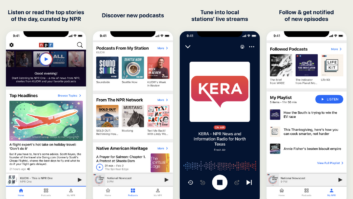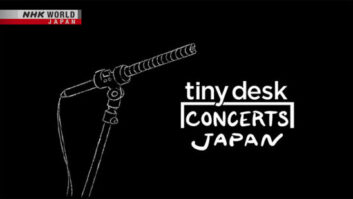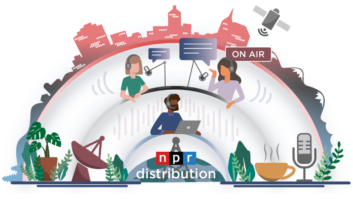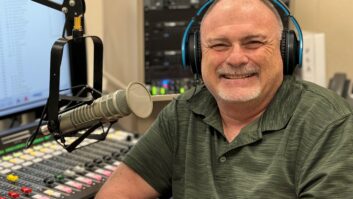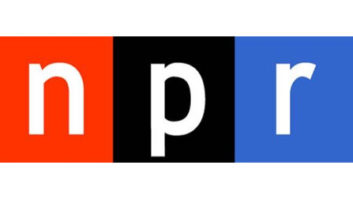NPR Labs has conducted what it describes as a real-world test of how FM modulators are used, to determine how much signal leakage from the consumer audio adapters is affecting the lower part of the FM band.
The modulators typically are used for iPods, MP3s and other personal audio devices such as satellite radio “plug and plays” to enable them to be heard through installed car receivers.
In a field-strength measurement study on two FM channels in the Washington area, NPR Labs found that approximately 1 percent of the cars had FM modulators; and of those, about a third exceeded Part 15 emission limits.
Given that the average U.S. driver spends 55 minutes per day traveling 29 miles, based on Department of Commerce figures, a driver could pass thousands of other vehicles and dozens of FM modulators in that commute, NPR believes.
“The study found that approximately 40 percent of these devices are producing signal levels in excess of FCC limits, potentially resulting in objectionable interference to broadcast services,” states NPR Labs in the study.
It conducted the research on behalf of the North American Broadcasters Association, a member of the International Telecommunications Association; NPR donated the research work. It has sponsored a draft recommendation on FM-modulated devices through the ITU and NABA, hoping to influence worldwide manufacturers, as reported here earlier.
Limited data
NPR initially wanted to review specific FM modulators and had already purchased some when NAB released its study (RW Aug. 2, page 1), said John Kean, head of Labs Measurements and Research for the Labs. So he switched tactics and developed a test to understand how many FM modulators are used and their emission levels.
Commercial market data on FM modulators is limited, NPR found. However, it quotes the Consumer Electronics Association as saying FM modulators and FM modulator/car chargers accounted for approximately 16 percent and 7 percent, respectively, of the $750 million personal audio player accessory market, or a total of $172 million in 2005.
NPR calculated that, assuming an average cost of $50 per unit, approximately 3.4 million modulators were sold in 2005, based on CEA figures.
“This does not include a significant number of modulators sold with portable satellite radios to connect to vehicle radios,” NPR wrote.
While NAB measured emissions with no obstructions between the modulators and the antenna in a static environment, NPR wanted to use measure the signal strength of the emission leakage from a moving car to its antenna at a fixed point, based on the FCC’s Part 15 limits of 250 µV/m at 3 meters.
The modulator is used inside the car and a steel vehicle partially shields the emissions from the modulators, so signal leakage is what can become a problem for radios in other cars.
People place FM modulators in different places in the car – on the seat, on the dash or in the cigarette lighter – and that location can make a difference in the measurements, said Kean.
“You can have two of the same car and modulators but put the modulator in different places and get two different results,” he said. “That’s why it’s best to take measurements of thousands of vehicles going by in order to get a big enough sampling to get average behavior.”
NPR Labs measured the field strength of signals emitted from more than 28,500 vehicles. The tests were conducted on three highways in the Washington area representing varying amounts of traffic.
Measurements were taken on 88.1 and 87.9 MHz, which NPR said appear to be the two most commonly supplied frequencies for personal FM modulators. The results indicate that nearly 1 percent of vehicles were operating modulators on these two channels alone. Of these, approximately one-third were operating with emissions that exceed the regulatory limit, according to the study, which means it’s likely “that a listener to 88.1 MHz or other FM channels will encounter objectionable interference in a matter of minutes of driving, or perhaps multiple occurrences per minute on high-traffic routes,” states NPR.
Is yours turned on?
NPR wanted to determine how many passing cars had FM modulators that were turned on – “radiating” – and the field strength of those modulators. Its personnel used a yagi antenna with a gain of 6 dBd, placed on a support on the ground next to each measured road; it was shielded with a band-pass filter to remove strong out-of-band signals and connected to a spectrum analyzer controlled by software running on a laptop.
Because Part 15 specifies a distance of 3 meters from the vehicle, NPR used mathematical formulas to normalize the measured field strength to the reference distance to determine compliance of the measured vehicles.
This was necessary so personnel could set up the antenna and take measurements a safe distance from the road. In most cases, they were 30 to 45 meters from the center lane, said Kean.
Interns counted cars that went by in each lane, and measurements were taken off the spectrum analyzer.
The first graph shows a 45-minute measurement sample collected alongside the northbound lanes of Interstate 395 at Potomac Park in Washington. The estimated field strength in dBµV at 3 meters is shown along the vertical axis and the local time in hours, minutes and seconds – HH:MM:SS – is shown at the bottom.
(click thumbnail)Fig. 1 – Measurement of signals at 88.1 MHz on I-395 in Washington, DC Source: NPR LabsFor comparison, the FCC limit, converted from µV/m to dBµV, is shown as a dashed red line. “It is readily apparent that at least nine of the 34 detected modulators exceed the FCC emission limit; some by 20 dB or more,” states NPR in the study. “This includes the aperture loss introduced by signals escaping through the vehicle windows.” Bigger windows allow more signal leakage, said Kean.
Measurements were collected at three sites, as detailed in Fig. 1. All measurements were conducted in midday, when traffic was not congested and flow was relatively constant.
As summarized in Fig. 2, the data indicate that up to 0.91 percent of vehicles were operating detectable modulators on only two FM channels.
(click thumbnail)Fig. 2 – Measurement data of FM modulators from three sites“Most significant is the proportion of modulators that were estimated to exceed the regulatory emission limit of 250 µV/m at 3 meters, ranging from 0.22 to 0.39 percent of vehicles or 30 percent to 50 percent of detected modulators,” states NPR in the report.
While this doesn’t seem like a lot, Kean said, 1 percent of 5,000 cars is a lot of vehicles. Even listening to a single channel, if 3,500 to 3,800 vehicles pass by in an hour, “you could pass dozens of modulators.”
Listener frustration
“And if you’re listening to your favorite radio station on 88.1, that’s probably interrupted numerous times,” he said. “The complaints we hear the most are from those listeners who pulled up to a stoplight and an FM modulator takes over their signal for the entire length of time they’re at the light. Their frustration of having interference is higher because it lasts longer,” Kean said.
To hear what the interference caused by the FM modulators sounds like, Kean set up a receiver in Potomac Park and listened to modulators as they went by to make sure he designed the right system to detect them.
“You could hear noise, hiss, and all of a sudden, a comedy channel or rap music…depending on what people were listening to. It would do that time and time again.”
Asked if NPR could identify the specific modulator models they were hearing, he said no, but “we have enough data to give us a pattern of usage.”
“Between NAB’s study and ours, we’ve answered key questions,” he said, such as how many modulators are compliant in actual use.
The test results have been presented to NABA’s technical committee.
NPR, acting as a NABA representative, planned to take its results to the ITU in August to present them as a draft recommendation; if approved they would be presented as a full recommendation in another ITU meeting in Korea in September, he said.







